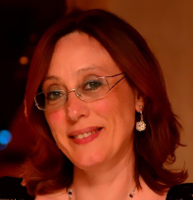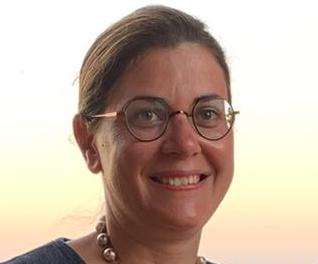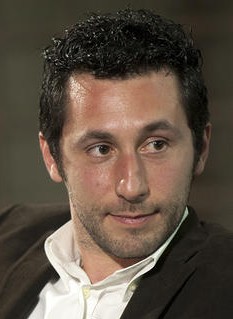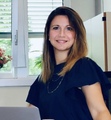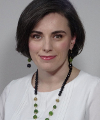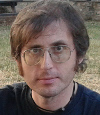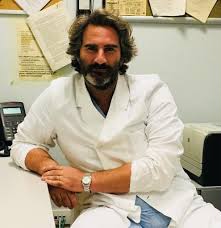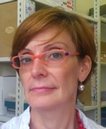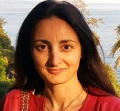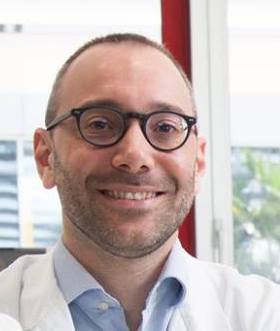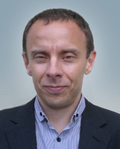Studying at the University of Verona
Here you can find information on the organisational aspects of the Programme, lecture timetables, learning activities and useful contact details for your time at the University, from enrolment to graduation.
Academic calendar
The academic calendar shows the deadlines and scheduled events that are relevant to students, teaching and technical-administrative staff of the University. Public holidays and University closures are also indicated. The academic year normally begins on 1 October each year and ends on 30 September of the following year.
Course calendar
The Academic Calendar sets out the degree programme lecture and exam timetables, as well as the relevant university closure dates..
| Period | From | To |
|---|---|---|
| 1 SEMESTRE PROFESSIONI SANITARIE | Oct 1, 2021 | Dec 23, 2021 |
| 1° e 2° semestre (corsi annuali) PROFESSIONI SANITARIE | Oct 1, 2021 | Sep 30, 2022 |
| 2 SEMESTRE PROFESSIONI SANITARIE | Jan 10, 2022 | Sep 30, 2022 |
| Session | From | To |
|---|---|---|
| FISIO VI SESSIONE INVERNALE - 2 ANNO | Jan 3, 2022 | Jan 28, 2022 |
| FISIO VI SESSIONE INVERNALE - 3 ANNO | Jan 3, 2022 | Feb 4, 2022 |
| FISIO VI SESSIONE INVERNALE - 1 ANNO | Feb 14, 2022 | Mar 11, 2022 |
| FISIO VI SESSIONE ESTIVA - 2 ANNO | May 2, 2022 | May 27, 2022 |
| FISIO VI SESSIONE ESTIVA - 3 ANNO | Jun 6, 2022 | Jul 1, 2022 |
| FISIO VI SESSIONE ESTIVA - 1 ANNO | Jul 4, 2022 | Jul 29, 2022 |
| FISIO VI SESSIONE AUTUNNALE | Sep 5, 2022 | Sep 30, 2022 |
| Session | From | To |
|---|---|---|
| FISIO SESSIONE AUTUNNALE | Nov 1, 2022 | Dec 23, 2022 |
| FISIO SESSIONE PRIMAVERILE | Mar 1, 2023 | Apr 30, 2023 |
| Period | From | To |
|---|---|---|
| Festa di Tutti i Santi | Nov 1, 2021 | Nov 1, 2021 |
| Festa dell'Immacolata | Dec 8, 2021 | Dec 8, 2021 |
| Festività natalizie | Dec 24, 2021 | Jan 2, 2022 |
| Festività pasquali | Apr 15, 2022 | Apr 19, 2022 |
| Festa della Liberazione | Apr 25, 2022 | Apr 25, 2022 |
| FESTA DEL LAVORO | May 1, 2022 | May 1, 2022 |
| Festa della Repubblica | Jun 2, 2022 | Jun 2, 2022 |
| Chiusura estiva | Aug 15, 2022 | Aug 20, 2022 |
| Santo Patrono Vicenza | Sep 8, 2022 | Sep 8, 2022 |
| Description | Period | From | To |
|---|---|---|---|
| TIR FISIO VI 3 ANNO - 1 SEM 1 PERIODO | TIR FISIO VI 3 ANNO - 1 SEM 1 PERIODO | Nov 15, 2021 | Dec 23, 2021 |
| TIR FISIO VI 2 ANNO - 1 SEM | TIR FISIO VI 2 ANNO - 1 SEM | Nov 29, 2021 | Dec 23, 2021 |
| TIR FISIO VI 1 ANNO - 1 SEM | TIR FISIO VI 1 ANNO - 1 SEM | Jan 3, 2022 | Feb 4, 2022 |
| TIR FISIO VI 3 ANNO - 1 SEM 2 PERIODO | TIR FISIO VI 3 ANNO - 1 SEM 2 PERIODO | Feb 7, 2022 | Mar 18, 2022 |
| TIR FISIO VI 2 ANNO - 2 SEM 1 PERIODO | TIR FISIO VI 2 ANNO - 2 SEM 1 PERIODO | Mar 28, 2022 | Apr 29, 2022 |
| TIR FISIO VI 3 ANNO - 2 SEM 1 PERIODO | TIR FISIO VI 3 ANNO - 2 SEM 1 PERIODO | May 2, 2022 | May 27, 2022 |
| TIR FISIO VI 1 ANNO - 2 SEM | TIR FISIO VI 1 ANNO - 2 SEM | May 30, 2022 | Jul 1, 2022 |
| TIR FISIO VI 2 ANNO - 2 SEM 2 PERIODO | TIR FISIO VI 2 ANNO - 2 SEM 2 PERIODO | May 30, 2022 | Jul 29, 2022 |
| TIR FISIO VI 3 ANNO - 2 SEM 2 PERIODO | TIR FISIO VI 3 ANNO - 2 SEM 2 PERIODO | Jul 4, 2022 | Jul 29, 2022 |
Exam calendar
Exam dates and rounds are managed by the relevant Medicine Teaching and Student Services Unit.
To view all the exam sessions available, please use the Exam dashboard on ESSE3.
If you forgot your login details or have problems logging in, please contact the relevant IT HelpDesk, or check the login details recovery web page.
Should you have any doubts or questions, please check the Enrollment FAQs
Academic staff
 michele.bertani@univr.it
michele.bertani@univr.it
 davideconte.bioeng@gmail.com
davideconte.bioeng@gmail.com
Cunico Laura
 laura.cunico@univr.it
laura.cunico@univr.it
 giada.goracci@univr.it
giada.goracci@univr.it
 tommaso.maluta@univr.it
tommaso.maluta@univr.it
Study Plan
The Study Plan includes all modules, teaching and learning activities that each student will need to undertake during their time at the University.
Please select your Study Plan based on your enrollment year.
1° Year
| Modules | Credits | TAF | SSD |
|---|
2° Year activated in the A.Y. 2022/2023
| Modules | Credits | TAF | SSD |
|---|
3° Year activated in the A.Y. 2023/2024
| Modules | Credits | TAF | SSD |
|---|
| Modules | Credits | TAF | SSD |
|---|
| Modules | Credits | TAF | SSD |
|---|
| Modules | Credits | TAF | SSD |
|---|
Legend | Type of training activity (TTA)
TAF (Type of Educational Activity) All courses and activities are classified into different types of educational activities, indicated by a letter.
Propaedeutic physical and biological sciences (2021/2022)
The teaching is organized as follows:
Learning outcomes
The aim of this course is to provide basic skills of biology, biochemistry, physics and statistics, main-ly focusing on the most useful aspects for understanding and investigating biomedical problems as-sociated with physiotherapy and to provide the foundations of the experimental method for modern scientific and technological disciplines, to get students consolidate scientific accuracy and critical evaluation of experimental data. At the end of the course students will have reached the necessary skills to understand, describe and analyse natural, biological and physical phenomena, regarding bi-omedical issues. Students will be able to explain molecular and cellular mechanisms of the human body and to understand the pathogenic meaning of alterations. Students will be able to report topics related to aforementioned fields in a precise way, with critical evaluation and appropriate scientific language. Finally, students will have developed abilities to approach further topics, which will be part of next year courses, with good autonomy. APPLIED PHYSICS: The aim is to provide basic knowledge of physical quantity and fundamental laws of physics, par-ticularly of mechanics and its applications within biomedical phenomena and real situations. To ac-quire the ability to solve simple exercises of physics, mostly referring to biomechanical concepts, al-so applied to practical situations. BIOCHEMISTRY: to provide basic knowledge of organic chemistry and biochemistry, the relation between structure and function of the main biological macromolecular classes, molecular-metabolic regulation, the interconnections between biochemical processes and energetic transformations. APPLIED BIOLOGY: to provide knowledge of biology and human genetics in an evolutionary vi-sion related to the structural, functional and molecular characteristics of cellular processes of living organisms and a focus on basic mechanisms that set up cellular activity, reproduction, interaction and transmission of the normal and pathological hereditary traits in humans. DESCRIPTIVE STATISTICS: to provide bio-statistical knowledge, focusing on basic statistic methods for biomedical data analysis such as methods for collecting and summarizing clinical or ep-idemiological research data, probability calculations, generalizing the information collected on a sample to the population of origin, a graphic summary representation and interpretation of the main statistical results.
Program
------------------------
MM: BIOCHIMICA
------------------------
PREPARATORY CHEMISTRY (several notions are included in the basic knowledge required). 1. Atomic structure and periodic properties of the elements: matter composition, atom, atomic particles; atomic theory; quantum numbers, and orbitals; electronic configuration, periodic table and chemical reactivity of the elements; electronic affinity, electronegativity. 2. The chemical bond: molecules and ions; ionic and covalent bond; intermolecular forces; hydrogen bond. 3. Solutions and acid-base reactions: concentration of the solutions, acid-base theories of Arrhenius and Brőnsted-Lowry; hydracids, hydroxides, oxyacids; acid-base reactions; pH and buffer solutions. 4. Organic chemistry notions: carbon atom properties; hybrid orbitals; organic compounds classification: functional groups; hydrocarbons; alcohols, ethers, thiols, amines, aldehydes and ketones; carboxylic acids, esters, anhydrides. BIOCHEMISTRY 1. Constitutive elements of the living matter: polymeric structure of the biological macromolecules. 2. Protein structure and function: aminoacid classification, buffering power, peptide bond, levels of protein structure; fibrous and globular proteins; hemoglobin and myoglobin: structure, function, factors influencing the oxygen bond; hemoglobin variants; enzymes: classification, role in the chemical reactions, regulation of the enzymatic activity. 3. Vitamins: hydro- and lypo-soluble vitamins; co-enzymes. 4. Bio-energetics: metabolism; chemical transformations in the cell; spontaneous and non-spontaneous reactions of the metabolic reactions; ATP as “energy exchange coin”; biologically relevant redox reactions. 5. Carbohydrates structure and metabolism: mono- and disaccharides; polysaccharides; glycoconjugates; glycolysis and its regulation; gluconeogenesis; hints of the penthose phosphate pathway; synthesis of the glycogen. 6. Citric acid cycle and oxidative phosphorylation: mitochondria; acetyl-CoA synthesis; citric acid cycle control; respiratory chain and electron transport; ATP synthesis. 7. Lipids structure and metabolism: structural lipids and biological membranes; cholesterol; stock-reserve lipids; lipids digestion and fatty acid β-oxydation; keton bodies formation; hints of fatty acids biosynthesis. 8. Aminoacid metabolism: hints of gluco- and keto-forming aminoacids; transamination and oxidative deamination; the urea cycle. Frontal teaching is the exclusive method adopted in this Course.
------------------------
MM: FISICA APPLICATA
------------------------
INTRODUCTION examples, measurement units POINT KINEMATICS position, displacement, velocity, acceleration linear motion, circular motion vectors POINT KINETICS Forces, Newton's laws Power, work, kinetic energy, potential energy, mechanical energy Conservative and not-conservative forces examples ROTATIONAL DYNAMICS AND EQUILIBRIUM rigid body definition, translation and rotation Moment of Inertia Torques Static equilibrium of a rigid body examples
------------------------
MM: STATISTICA DESCRITTIVA
------------------------
Use of statistics in health data Collection and presentation: Measurement procedure and Variable types Precision and accuracy of a measurement procedure Tables 1 and 2 entries Absolute and relative frequencies Cumulative frequencies Graphical representation of the data Position and dispersion measures: Mode Quantiles and median Simple and weighted mean Range and standard deviation Coefficient of variation Introduction to probability • Definition of probability • Rule of addition and multiplication • Independent and conditional probability
------------------------
MM: BIOLOGIA APPLICATA
------------------------
Characteristics of the living beings. Major themes and fundamental concepts of biology. Origin of life. Cell Theory. Biological kingdoms and domains. Evolution and Natural Selection. Water: characteristics and biological importance. Eukaryotic and prokaryotic cell and viruses: common features and differences. Endosymbiotic theory and evolution from prokaryotes to eukaryotes to multicellular organisms. Structure, function and organization of the cell: main characteristics and functions of organelles and cytoskeleton. Role of internal compartmentalization. Biological membrane: structure, properties and function. Movement of molecules across cell membranes: passive (osmosis, simple diffusion, facilitated diffusion) and active transport (primary and secondary; exocytosis and endocytosis). Cell junctions. Cell communication and signaling pathways: Signal Reception: ligands and receptors. Signal Transduction: second messengers, signaling cascade and message amplification. Cellular responses. The human genome: Organisation of DNA in chromosomes. Structure and organisation of chromosomes. Nucleosomes and packed chromosome. Euchromatin and Heterochromatin. Cell cycle: definition, significance of the phases and regulation. Hints about cell death and staminal cells. Cell division. Asexual reproduction and Mitosis. Sexual reproduction and meiosis. Crossing-over. Human gametogenesis. Chromosomal bases of inheritance: Autosome and sexual chromosomes. Dosage compensation and X inactivation in Mammals. Normal and pathological human karyotype. Structural and numerical chromosomal abnormalities. Molecular bases of inheritance. DNA: structure, function, replication and its role in heredity. Definition of gene. Informational pathway: transcription, RNA processing (splicing), genetic code, RNA translation and protein synthesis. Hints about regulation of gene expression in eukaryotes. DNA mutation. Different classes of mutations. Spontanous mutations. Mutations induced by chemicals or physical agents. DNA repair mechanisms. Somatic mutations and cancer. Mendelian genetics and Heredity. Definition of phenotype, genotype, locus, gene, allele, domin ant, rtecessive, homozygote and heterozygote. Mendel’s laws. Allele segregation and independent assortment of genes. Gene – chromosome relationship: independence and association; genetic recombiantion. Genetics of AB0 and Rh blood groups. Modes of transmission of genetic information. Inheritance patterns: autosomal (dominant and recessive) and sex-linked (dominant and recessive) inheritance. Introduction to transmission of complex characters. Hereditary and genetic diseases. Examples. Exceptions to Mendelian inheritance: penetrance, expressivity, incomplete dominance and codominance, multiple alleles, epistasis, polygenic characters, mitochondrial inheritance, environmental influence.
Bibliography
Examination Methods
The exam consists of 4 written tests, one for each module, based on all the issues covered throughout the course. Tests can be passed separately as long as they are taken within the same academic year. For each academic year, 6 periods are available to take the exams: 2 in the Winter Session at the end of the course, 2 in the Summer Session and 2 in the Autumn Session. In order to gain access to the biology test, students must have first discharged any training debts relating to the minimum biology, chemistry and physics knowledge.
To pass the exam, students must get a score of not less than 18/30 in each test. The final mark (/out of 30) willl derive from the weighted average over credits of each single test score. Students can retire or refuse the proposed score: in such case, any partial credit will be canceled and the students shall enroll again for the whole examination (all the 4 tests).
Career prospects
Module/Programme news
News for students
There you will find information, resources and services useful during your time at the University (Student’s exam record, your study plan on ESSE3, Distance Learning courses, university email account, office forms, administrative procedures, etc.). You can log into MyUnivr with your GIA login details: only in this way will you be able to receive notification of all the notices from your teachers and your secretariat via email and soon also via the Univr app.
Graduation
Documents
| Title | Info File |
|---|---|
|
|
pdf, it, 367 KB, 19/02/24 |
|
|
pdf, it, 142 KB, 19/01/24 |
|
|
pdf, it, 862 KB, 19/01/24 |
|
|
pdf, it, 273 KB, 25/03/24 |
Gestione carriere
Student login and resources
Appelli d'esame
Si pubblicano gli appelli per la sessione estiva per il 2° anno A.A 2023/2024
Si pubblicano gli appelli per la sessione invernale per il 1° e 3° anno A.A. 2023/2024
Documents
| Title | Info File |
|---|---|
|
|
pdf, it, 417 KB, 29/11/23 |
|
|
pdf, it, 419 KB, 08/04/24 |
|
|
pdf, it, 414 KB, 29/11/23 |
Orario lezioni
AVVISO ACCOGLIENZA STUDENTI 1° A a.a 2023/2024
CALENDARIO DIDATTICO 2023/2024
Si pubblica il calendario dellle lezioni 3° anno 2 semestre 2023/2024
AGGIORNAMENTO 7 MARZO 2024 Calendario lezioni 1° A 2° semestre
Documents
| Title | Info File |
|---|---|
|
|
pdf, it, 215 KB, 07/03/24 |
|
|
pdf, it, 114 KB, 21/09/23 |
|
|
pdf, it, 156 KB, 12/10/23 |
|
|
pdf, it, 229 KB, 06/02/24 |
Attività Seminariali/a scelta dello studente
Attività Seminariali/a scelta dello studente
 045 8027603
045 8027603
